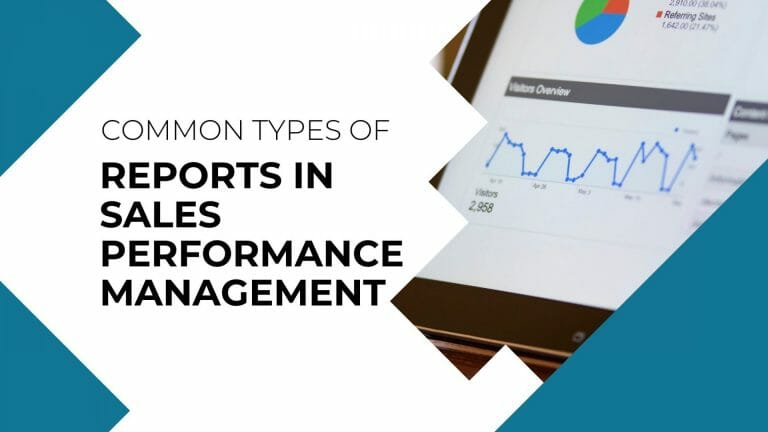Reporting and analytics are words businesses use daily. With more
and more data flooding organizational systems across the globe, companies are
constantly struggling to mine important insights that could not only provide a
look into causes of historical performance but also a predictive look into
future scenarios. For compensation administrators and sales organizations,
Sales Performance Management (SPM) solutions are a significantly efficient
method of providing sales teams an accurate, detailed and timely look into
their current performance and future compensation potential.
The following are the most common reports, by role, that
businesses implement to establish a culture of transparency of data for their
sales organizations.
Sales rep reports
For any sales individual, compensation remains one of the most
important factors in determining whether to take on a new job or stay in an old
one. Common factors that cause sales attrition are usually tied to wage-related
issues. Businesses have learned the significance of competitive pay structures
to attract and retain top sales talent. However, many organizations still
struggle to ensure enough transparency in compensation data to deter reps from
doubting the accuracy of their periodic payouts and resorting to shadow
accounting. A detriment to productivity, shadow accounting is a signal of
mistrust in the organizational data and a potential catalyst for sales
turnover.
SPM solutions allow organizations to rectify this issue by not
only automating compensation logic and removing error-prone, time-consuming
processes but also granting all relevant stakeholders, including reps,
visibility into their individual compensation information. For example, a
compensation summary displays common HRIS information such as employee data
combined with various plan components, prior period adjustments and associated
payouts such as cash and non-cash rewards. Since compensation summaries tend to
be a regular periodic statement delivered to individual contributors, trending
attainment metrics, payout trends and component-based achievement data is also
included by businesses to inform reps of their likelihood to hit periodic and
yearly targets and potential payout that could be earned. Advanced summaries
may also include scoreboards that allow reps to compare their own performance
to other team members in an attempt to promote data transparency, foster
healthy competition in the sales organization, and boost productivity.
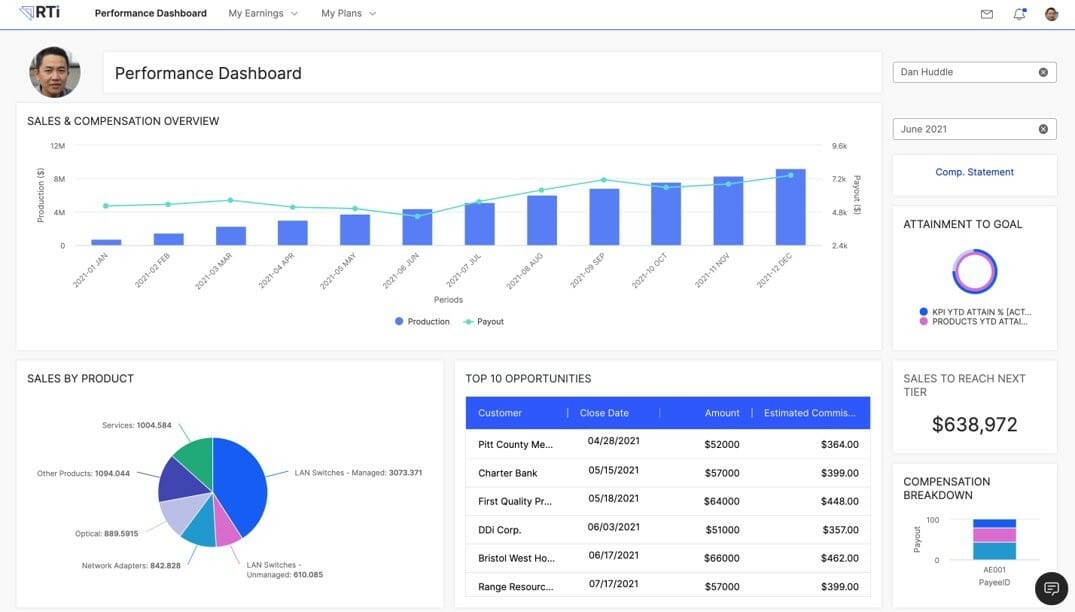
Another common report is the compensation details report available for individual contributors. The compensation details report pulls from both the commissions calculations as well as the applicable CRM system to display individual transactions that make up the total payout as shown in the compensation summary. Such detailed visibility is key to increasing the sales team’s trust in the data provided by the compensation administration team, increasing rep morale and productivity. The visibility also provides an avenue for reps to validate the accuracy and comprehensiveness of payouts, along with the accuracy, so that the need for adjustments could be flagged and payouts rectified in a timely manner.
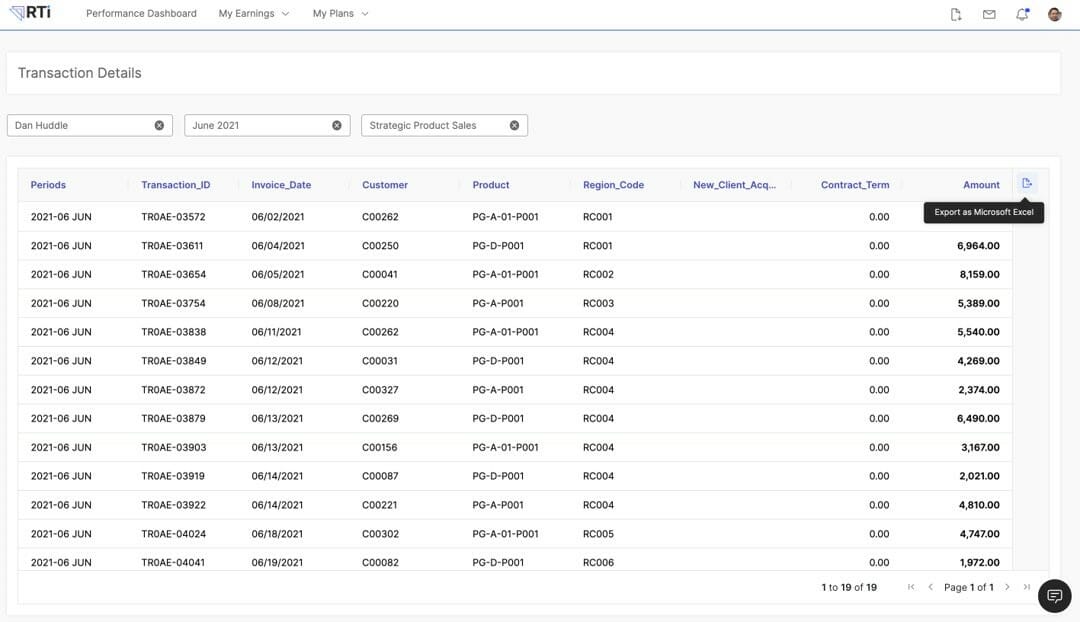
Sales Management Reporting
Sales Manager reports serve as an effective way to understand team performance, areas of improvement in the team and relevant incentives information.
Manager dashboards focus not only on personal target achievement and compensation information, but also display team metrics that help managers examine each individual team member’s performance and contribution to the attainment and payout measures listed.
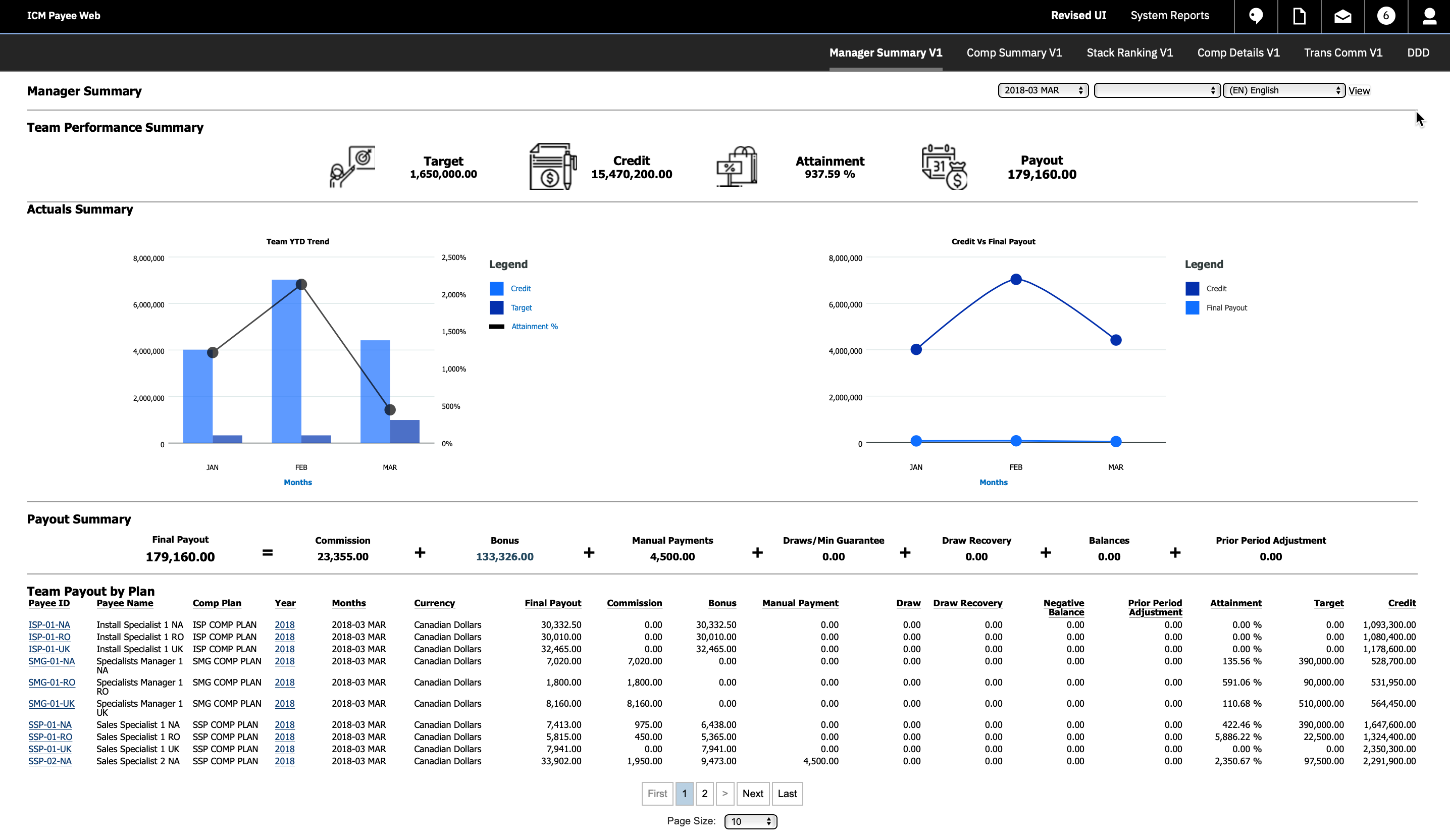
A helpful feature of manager summaries is the team compensation section. It allows the managers to view a breakdown of total team rewards as well as details of the transactions on which the quota attainment, credits and payouts were calculated. Moreover, manager reports may also include top versus bottom performer rankings to help identify any problems within the team. For example, if a high achiever is not meeting their targets, it could signal a potential issue with the new plans such as overly aggressive targets or non-optimized territory assignments. It could also indicate that the rep may just be having a rough phase due to external factors or something more significant such as the rep hunting for a new job. On the other hand, such data can help managers identify under-performers in need of further coaching and additional support in the sales process. Stacked ranking reports are common means of assessing sales teams and identifying bottom performers who need additional training and support or, on a more serious note, those who should be placed on performance improvement plans.
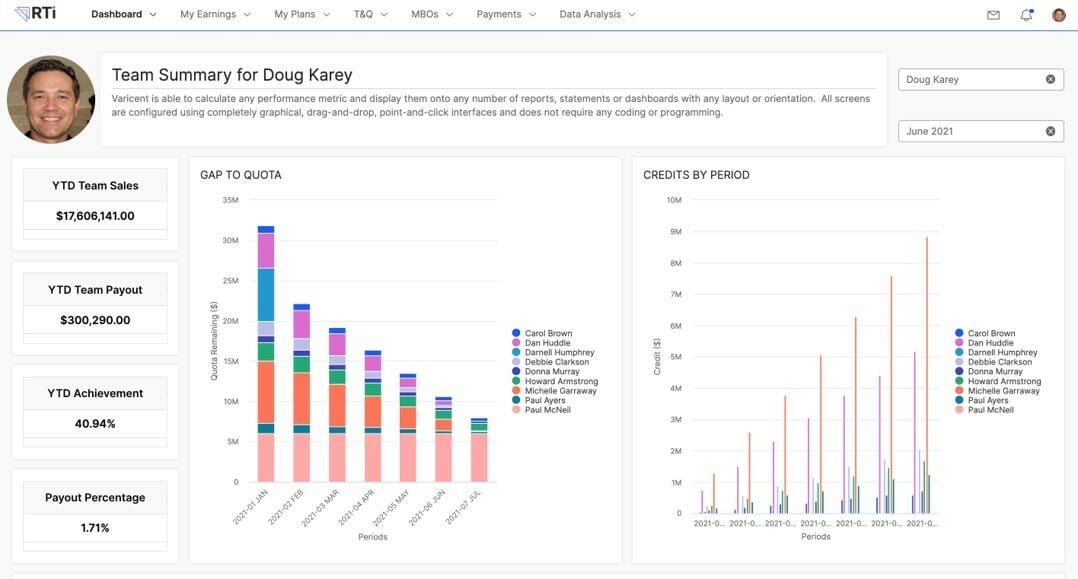
Compensation Administrator Reports
While leading SPM solutions give compensation administrators a comprehensive look into the entire compensation structure and data, quick wins for administrators include being able to view any individual’s summary or detail reports to answer rep inquiries appropriately and being able to access audit and compliance data quickly and easily.
On a larger scale, well-designed compensation administrator dashboards can provide a view into some of the most pressing issues that need attention. From notifications for pending or upcoming administrative activities to information needed such as which individuals are eligible to be included in new plans based on updated training and certification requirements, compensation dashboards can keep administrators apprised of the immediate needs of the organization.
Other types of analysis most commonly included by administrators is information around pay-for-performance and plan effectiveness measures to determine if plans are fair, competitive and immune to any loopholes which may allow reps to sacrifice performance without taking a hit on compensation. The report may indicate problems with compensation plan design and effectiveness by displaying analytics around rep complaints and inquiries, over-achievers versus under-achievers and even identifying overly quiet reps or teams which may signal other problems such as the plan design being too lax for a particular role or territory.
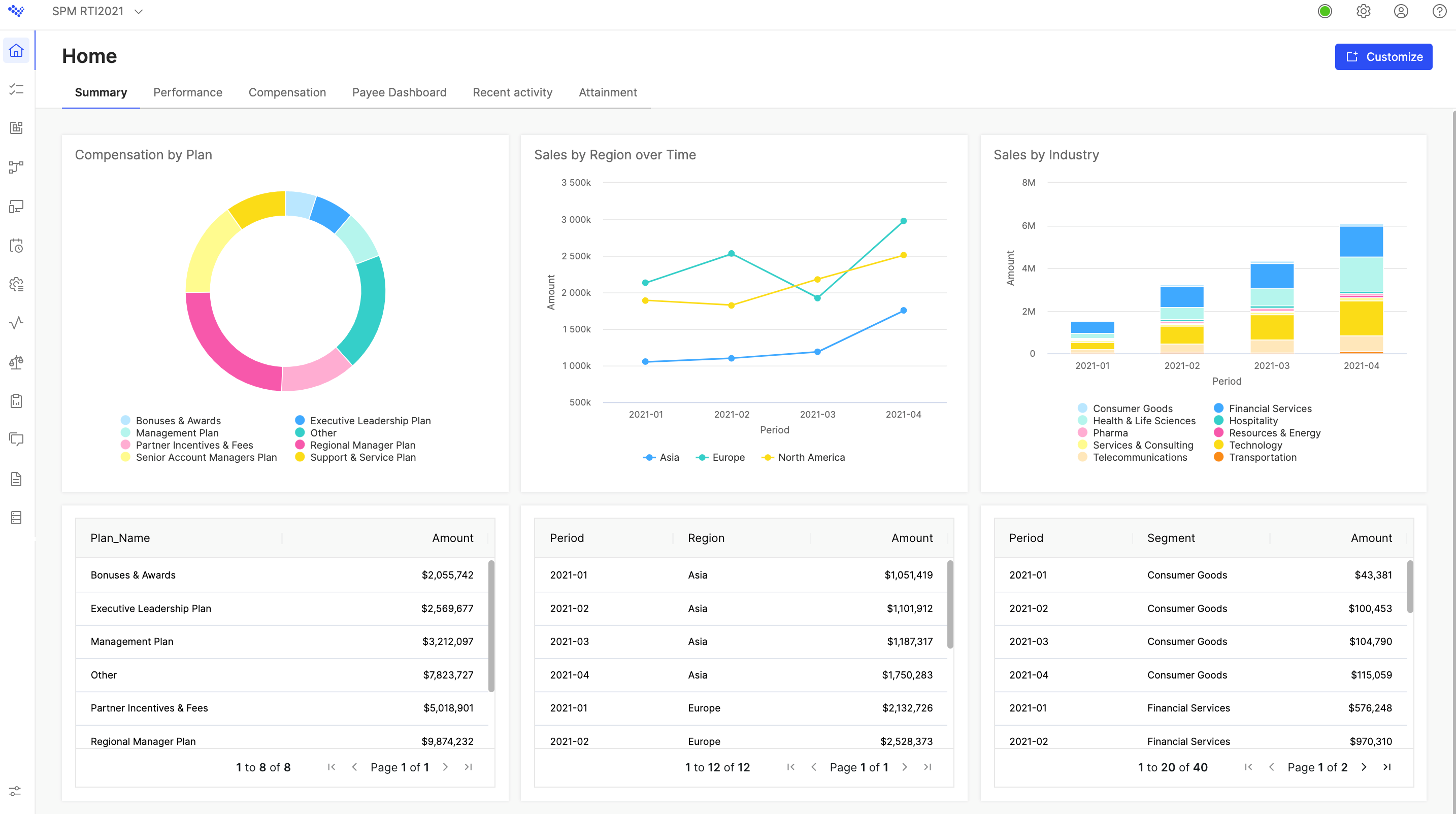
Quota and territory reports shed light on issues within the compensation framework that may be affecting the business as well as rep performance. For example, territory effectiveness analysis illuminates issues within territory assignments including lack of coverage and misalignments that could impact rep productivity. Such investigations help compensation administrators adjust compensation structure elements to ensure individual reps are maximizing their performance while the company achieves its strategic objectives.
